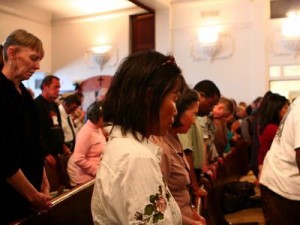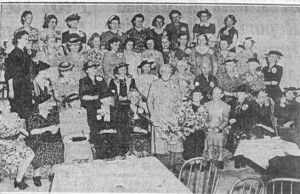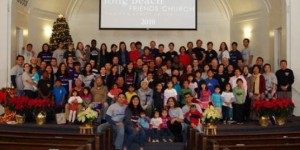In 1979, the Long Beach Friends Church looked to be on its last legs. This church, which had been formed ninety years earlier, had once thrived with a membership in the hundreds. By the late 1970s, though, worship attendance was closer to a couple dozen and it had no children’s Sunday school program to speak of.
This happens to churches sometimes, for a variety of reasons. For the Long Beach Friends, the biggest factor seemed to be that many long-time members had moved away. We Americans are a restless lot, and this has been no less true of southern California. As residents came and left Long Beach, the demographics of the city shifted, with Asian and Hispanic immigrants making up a larger percentage of the population by the 1970s.
Members of the church wondered whether or not they would have to “lay down the meeting.” (Translation for the non-Quakers among you: closing down the church). The church held a prayer meeting. Through that meeting they decided that God was telling them that He still had a purpose for that church, which might mean some sort of ministry in their community. They decided they would not lay it down.
Very shortly afterward – it may have been the next Sunday morning–four Khmer men (immigrants from Cambodia) stopped in front of the building. They were looking at the cross and wondering if the building were a church. One of the women from the church invited them in to their Sunday Bible study. The one man of the four who could speak a little English told the class they had been in the United States for just a few months. They wanted a church where they could raise their children as Christians. Somewhere, in a winding odyssey that had taken them from their villages in Cambodia, to refugee camps in Thailand, to southern California, they had adopted the Christian faith.
The Long Beach Friends Church now found itself on a different sort of odyssey. The children’s program, of course, suddenly took on new life. But the existing members also discovered that they had been pushed into unfamiliar territory. They decided they needed to round up clothes, toys and transportation for the new immigrants. They had to learn Cambodian customs. They had to figure out how to hold worship and conduct ministries in a couple of different languages. And they had to learn the ropes of the medical, welfare, housing, interpreter and the refugee systems.
 Today, Long Beach Friends is a thriving multiethnic church. You should check out their website. The church has worship services, Bible studies, and ministries in English, Khmer, Spanish and Korean. They have an inner city ministry, community dinners, programs for children, and a sports ministry. Nobody talks about “laying down the meeting.”
Today, Long Beach Friends is a thriving multiethnic church. You should check out their website. The church has worship services, Bible studies, and ministries in English, Khmer, Spanish and Korean. They have an inner city ministry, community dinners, programs for children, and a sports ministry. Nobody talks about “laying down the meeting.”
Of course, the church must have had its conflicts, tensions, challenges and difficulties along the way. I don’t know any of those details, but I know these things happen in every church, family, school, business and, needless to say, long-term cross-cultural ministry. The key is not sinlessness but faithfulness. That prayer meeting in 1979 demonstrated a desire by the small congregation to discern what God had called them to and then to be faithful to that call. And so did the search by the Khmer men to find a church in this strange new land.
More on this in my next post.



Thanks for posting this, Jay. I am enjoying your blog! One thing though, I don’t think there is a Korean ministry at this time, though a group of Koreans puts on a meal for the homeless once a month in the Fellowship Hall. However, we did have our first ever tri-lingual combined morning service for Labor Day a couple weeks ago. It was like the first Pentecost Sunday with all the “tribes, tongues, and nations” to say the least!
Thanks for the clarification, Joe. I think I saw something about the Korean meal and misinterpreted the nature of the ministry. Still, it’s a much more multi-ethnic congregation than most places. Jay